The following photos were taken over the past several days.
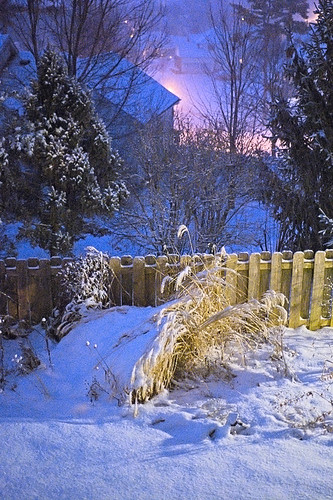
View from my parents' back porch.
You can tell when snow is about to fall — for the land is enveloped in silence, and even nearby noise is muffled. During snowfall, if the wind is not blowing, you can hear the tiny flakes hitting the ground. The quietness of snow is remarkable, giving a sense of calm to even a busy city.
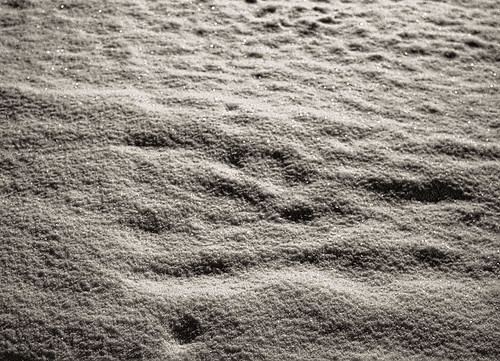
Freshly fallen snow has some interesting texture, sculpted by the wind.
According to the National Weather Service,
St. Louis is located at the confluence of the Mississippi and Missouri Rivers, and near the geographical center of the US. Its position in the middle latitudes allows the area to be affected by warm moist air that originates in the Gulf of Mexico, as well as cold air masses that originate in Canada. The alternate invasion of these airmasses produces a wide variety of weather conditions, and allows the region to enjoy a true four-season climate...The maximum amount of snowfall, in a 24 hour period, was 20.4 inches, which happened in March of 1890. Snow can be found in Saint Louis between November and April, with trace amounts having historically fallen in October and May.
Winters are brisk and stimulating, but prolonged periods of extremely cold weather are rare. Records show that temperatures drop to zero or below an averages of 2 or 3 days per year, and temperatures as cold as 32 degrees or lower occur less than 25 days in most years. Snowfall has averaged a little over 18 inches per winter season, and snowfall of an inch or less is received on 5 to 10 days in most years....
The climate of Saint Louis is similar to that of eastern Europe, and also Tokyo, Japan, Beijing, China, and Seoul, South Korea. But the kind of climate found here is completely absent in the southern hemisphere.
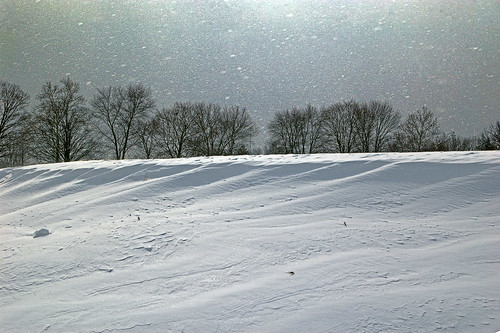
Snow falls over the lake dam at Hillermann Park, in Washington, Missouri.
Snowfall adds some cheer to the land when the lights of Christmas are finally turned off. The beauty of untrammeled snowscapes is captivating, and it can even briefly turn a drab city into a thing of wonder.
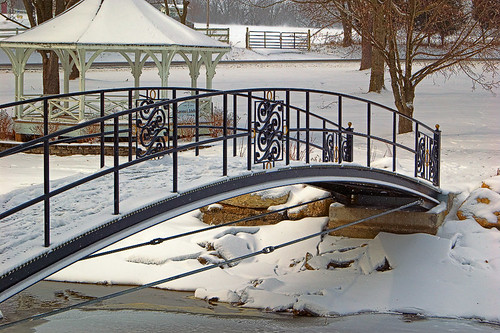
A bridge over an arm of that lake.
Snow lasts briefly enough here that local skiing is not a major winter pastime, and a snowmobile would be a useless expense; however, children quickly make use of the snow we do have, building snowmen and sledding.
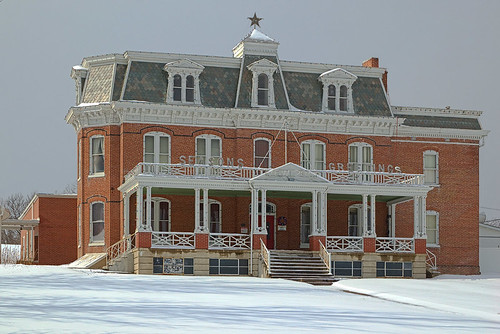
Old Busch home in Washington.
Snow is a natural symbol of purity, renewal, and transformation, so we should not be surprised that this symbol is used in sacred scripture. "If your sins be as scarlet, they shall be made as white as snow" (Isaiah 1:18); Our Lord's garments shone as white as snow at the Transfiguration (Matthew 17:2), which according to Saint Augustine, "signified the Church cleansed from every spot of sin." David prays, "You shall sprinkle me with hyssop, and I shall be cleansed: you shall wash me, and I shall be made whiter than snow," (Psalm 50:8 LXX). Mystical theologians invoke the image a snow-covered landscape in the bright sun: the brightness is so great that our vision dims, and we even risk snow blindness; so is God's glory so bright that we cannot bear to look upon it, and therefore from this comes the mystical language of the "darkness above the light".
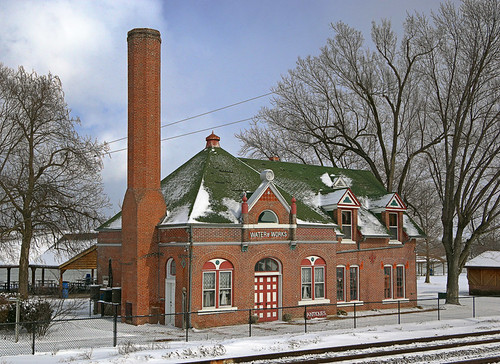
Old water works building on the riverfront at Washington.

Watercress grows in a spring run, at the corner of Smizer Mill and Meramec Station Roads, near Valley Park. Springs hereabouts discharge water at a temperature close to the yearly average — roughly 59 degrees Fahrenheit (15° C.) — and so do not freeze. Although you cannot see it here, steam was rising from the waters, and an aquatic mammal was resting here, before swimming away.
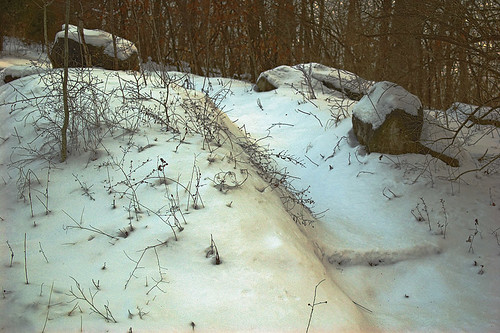
The gloom at day's end is evident on this snow-covered hiking trail at Emmenegger Nature Park, in Kirkwood. There were no tracks yet in this snow, either from human or animal.
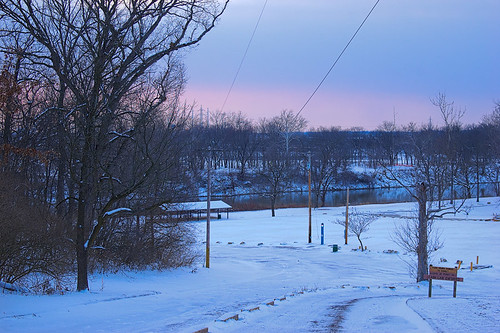
The blue light of dusk illumines a snow-covered road and parking lot at Emmenegger. The Meramec River — swift-running and spring-fed and hence never frozen — runs through the background.
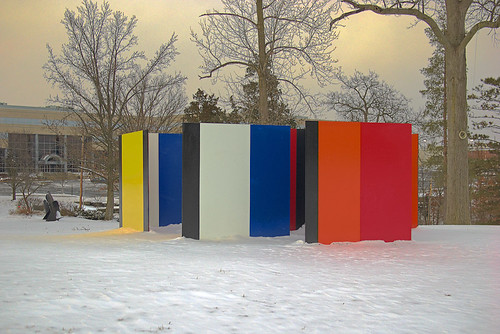
Brightly colored abstract art, at Laumeier Sculpture Park in Sunset Hills. I used to work in the building seen in the background.
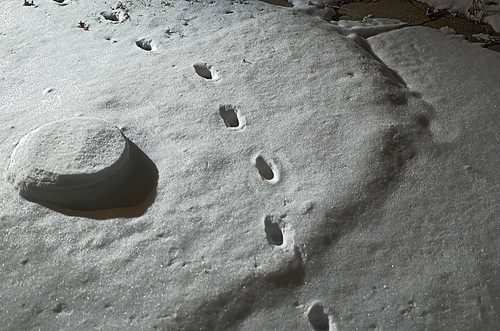
Animal tracks in the snow, at night. As the front and back paw tracks coincide, I would assume this was made by a cat.


Snow is such a great sound insulator. It truly does make things seem so much quieter particularly at night. There are few things in nature that are more enjoyable than walking in a deep newly fallen snow on a frigid moonlit night.
ReplyDelete